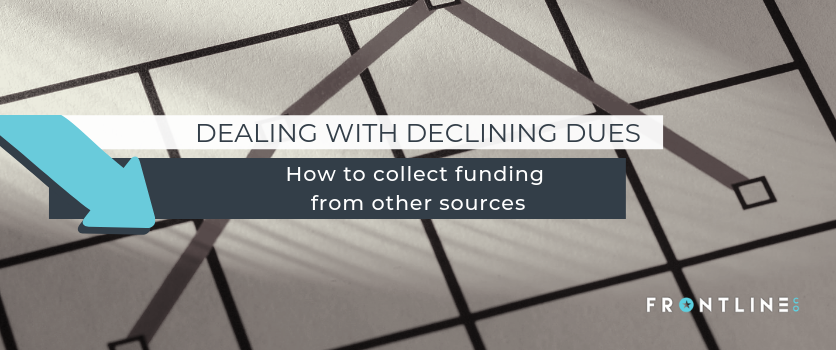People seem to want everything for free these days – from cover charges at parties to online newspaper articles. Everyone expects value but isn’t necessarily willing to pay for it.
That frugality has spread to the association sector. Reliance on dues has declined dramatically in recent decades. ASAE and the Center for Association Leadership report that in 1953, 95.7% of association revenue came from dues. By 2016, only 45.4% of trade association revenue, and 30% of professional association revenue came from that source.
Members want the benefits that come from being a part of a professional organization. They frequently don’t want to pay for them, however. It’s a big problem – if you aren’t bringing in money, you may be shutting your doors.
Dealing with declining dues
When it comes to paying dues, members are less likely than ever to willingly open their wallets. This creates a real Catch-22. Associations are expected to provide significant value for the industries and professions they serve. They’re also dealing with dwindling dues revenues with which to provide that value. If you don’t give members the value they need and demand, you risk losing them altogether.
What does this mean for associations? In short, it presents an opportunity for change. Your association still needs financial support from members, but how you collect may be changing. It’s a difficult puzzle to solve, but when you do, you secure the future of your association.
Turn to other sources
The good news: dues aren’t your only way to derive dollars from members or customers. Your association may have several other avenues for funding:
- Education: Most associations offer educational programming to their members. Consider expanding the training, classes, workshops, and other resources. You may also need to think about increasing fees for the education you provide. If members are benefiting from the programs, they’re likely willing to fork over a few more dollars for it.
- Conferences: Membership gatherings enable sharing of knowledge and news. Look into expanding the number of meetings you produce each year (nationally and locally). Be sure to examine whether you’re charging enough. Conferences open opportunities for sponsors booths and more, so the revenues don’t just have to come from attendees alone.
- Subscriptions: Associations frequently offer informational publications and resources to paying members. It may be possible to shift the burden of dues to paid subscriptions for these resources.
- Products and certification: People take pride in their professions. They’re eager to expand their opportunities in the field. Consider offering continuing-education courses, and adding branded merchandise.
Check-in before charging
Depending on your members’ point of view and finances, they may not be willing to pay for everything. It might be a good idea to poll your members to see what they’d want to pay for, and what they won’t. Something as simple as a SurveyMonkey poll could tap into the answers you’re looking for.
Dealing with dwindling dues calls for experience and creativity. At Frontline, we offer both. Our staff has years of dealing with the ins and outs of membership dues and coming up with solutions to keep organizations funded. Don’t hesitate to reach out – we’re always more than happy to lend expertise and advice.


